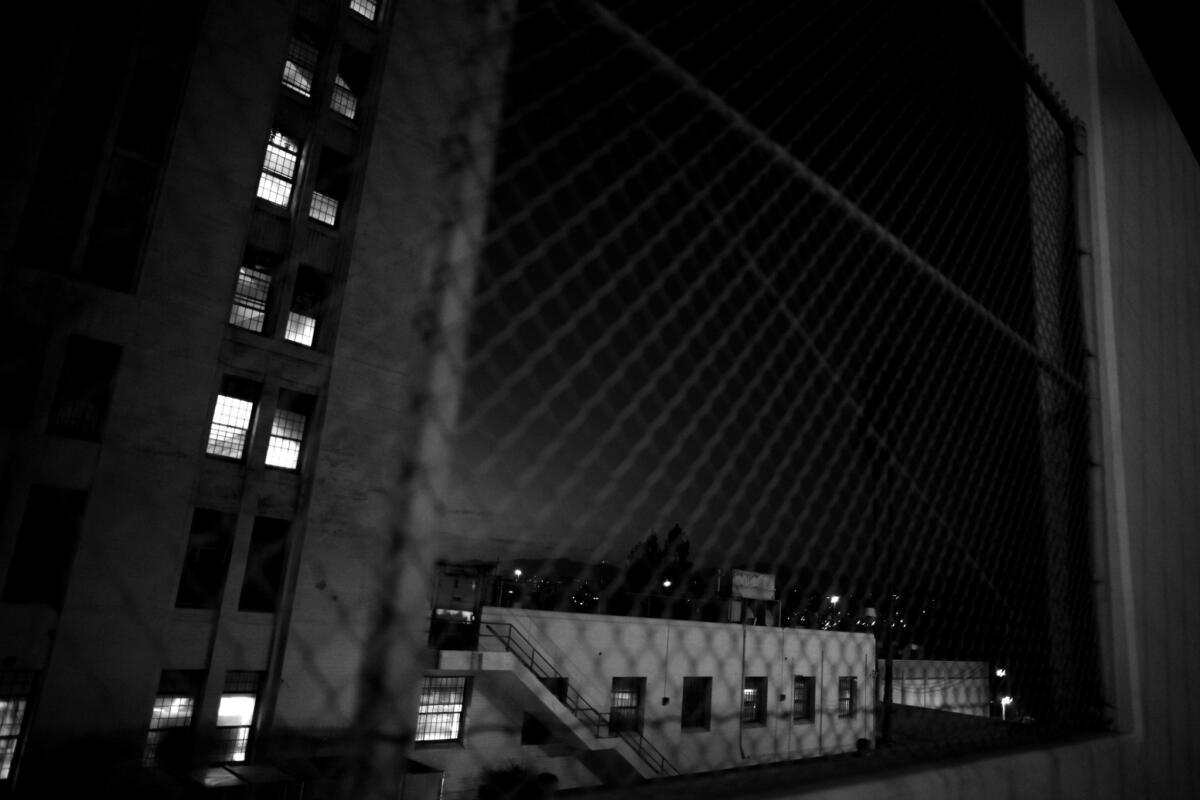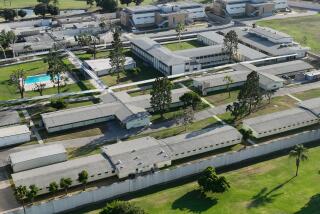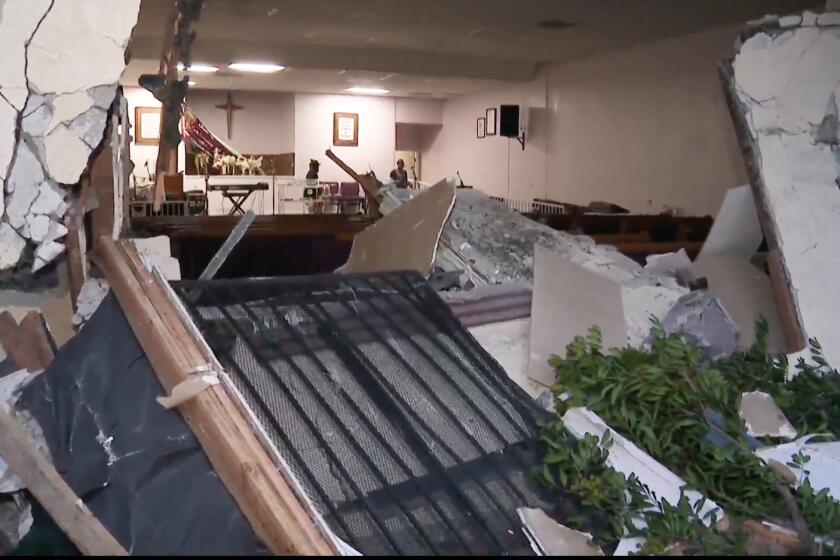L.A. County’s foster center should be closed immediately, panel says

A special committee report has recommended that Los Angeles County shut down its Youth Welcome Center, above, which temporarily houses foster care children ages 12 and older.
Los Angeles County’s foster care system should promptly shut down its last-resort facility for older youth with nowhere else to go and make significant new investments in the facility for younger youth, a special committee appointed by the Board of Supervisors has concluded.
The committee’s report was prompted by a Feb. 28 article in the Los Angeles Times that described an array of problems at the county’s Youth Welcome Center, including the recruitment of foster children for prostitution and workers who said the operation was spiraling out of control.
“The current situation is unacceptable for children already traumatized by abuse and neglect,” the report, which needs to be approved by the full Los Angeles County Commission on Children and Families before its recommendations are forwarded to the Board of Supervisors, stated.
As the report was being drafted, the state was moving on a parallel track to require changes to the Youth Welcome Center for children 12 and older and the Children’s Welcome Center for younger youths, requiring the county to come up with solutions to care for this particularly challenging population.
The two centers, the only foster care facilities that turn no child away, are on the campus of Los Angeles County-USC Medical Center. Together they serve hundreds of children and teens each year as they wait to be placed in increasingly scarce foster homes.
Most young people at the Youth Welcome Center are older teenagers. Many have some type of mental illness or medical issue. Some are gay, lesbian, bisexual or transgender. Most have been thrown out of multiple foster homes.
County supervisors opened the welcome centers with fanfare two years ago, heralding them as a solution to years of problems housing the most difficult-to-place children. Before the centers opened, this type of foster child was placed in a converted conference room that everyone involved agreed was a stopgap solution.
The centers are allowed to keep children for only 24 hours and are not licensed for the lengthy stays some of the youths endured. They lack sufficient bedding, bathrooms and showers, as well as mental health and the education professionals necessary to meet their needs.
Over time, the number of youths without a proper foster home grew. It the last year, there were 800 violations of the 24-hour rule at both welcome centers, a county commissioner said.
Following The Times report, state officials in April took a harder line and sued the county, pushing the centers to comply to the letter of state law. The county and state reached a settlement agreement the same month and agreed to begin the licensing process to bring the existing facilities up to the state’s standards.
These changes would include establishing facilities at the centers that provided the required amenities and opportunities so young people could be legally housed there for up to three days.
That would be only a partial solution, however, because some of those children couldn’t be placed in foster homes in that time frame. In those cases, officials worry that after three days their facilities could again violate state regulations.
DCFS Director Philip Browning said it is clear that to adhere to the three-day requirement imposed by the state, his department would have to significantly upgrade the centers or replace them altogether at another location.
He has issued a call to the region’s larger private group homes to submit proposals on how they might house the replacement facility, which would be 30,000 square feet, the size of a supermarket. The department will evaluate which is the most cost-effective option, he said.
Leslie Starr Heimov, who leads the court-appointed law firm for foster youths, said that the DCFS plan to solve the centers’ problems by establishing a three-day facility is insufficient.
“For the hardest-to-place youth, I’m skeptical that we will do much better in 72 hours than what we do in 24. We will once again be in the position where we are just looking for a bed — any bed” to move a child out of a welcome center, she said.
Both she and the commission’s report recommend more sweeping change, including vast improvement in the inventory of foster homes and a 30-day emergency shelter. Only more ambitious reforms such as those, she said, “will ever solve the revolving door” of children failing to find lasting foster homes and repeatedly returning to the welcome centers.
Wendy Garen, a member of the committee that ordered the report, does not agree with all of its proposals, but does believe that the elephant in the room is the collapse in the number of available foster homes.
Since 2000, the number of beds in homes of foster parents who are unrelated to the foster youths has dropped from 22,000 to 9,000, and social workers make as many as 100 calls to find a home for a single child.
At the same time, the population of foster youths has become more difficult to manage as legislators passed laws to decriminalize prostitution, certain types of assault and other offenses that once sent many foster youths into the hands of the juvenile delinquency system.
Garen called this disparity between the growing number of youths in desperate need of homes and the shrinking number of homes “a crisis.”
garrett.therolf@latimes.com
Twitter: @gtherolf
More to Read
Start your day right
Sign up for Essential California for news, features and recommendations from the L.A. Times and beyond in your inbox six days a week.
You may occasionally receive promotional content from the Los Angeles Times.







